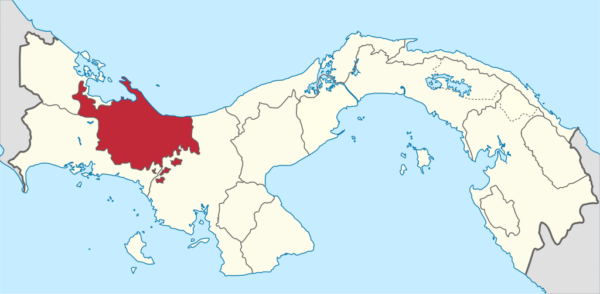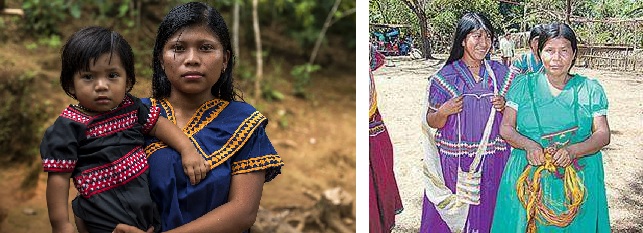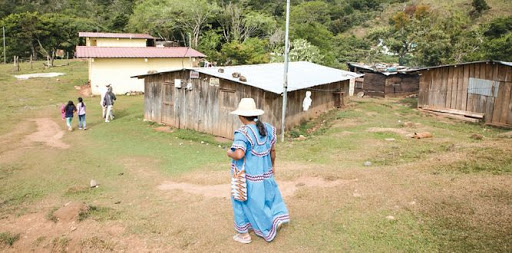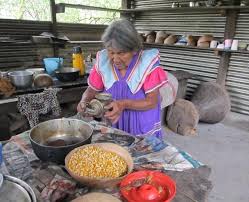
Ngöbe-Buglé is a region of the Republic of Panama. It has an autonomous government represented by the Cacique General Ngöbe-Buglé and the General Congress Ngöbe-Buglé. The Ngöbe Buglé comarca was created in 1997. It is located between Chiriqui, Bocas del Toro and Veraguas. The capital is Llano Tugrí (or Buabïti). The region is inhabited by the indigenous Ngöbe and Buglé ethnic groups, as well as peasants, and 213,860 people live there, and its area is 6,968 km².

The region is characterized by its mountainous terrain, steep slopes, and nutrient-poor soils generally with high rock content, characteristics that make agriculture difficult. On the Caribbean slope there is no dry season and the tropical forest dominates the landscape, on the Pacific slope there is dry windy weather (December to April) and a wet season. As a result of the greater seasonal variation, there are more localized geographic zones on the Pacific slope and the vegetation consists of pastures mixed with tropical forest cover. Small perennial streams and large rivers run on both sides of the continental divide and are used for bathing, laundry, and drinking. In the region, most trips are made on foot or on horseback, as there is only one access road throughout the year that leads to San Félix, a city connected to the Pan-American Highway through Las Cruces.

Although closely related and collectively referred to as the Ngöbe and Buglé they are two groups whose languages are mutually unintelligible. The largest group, the Ngöbe, speak Ngäbere, while the smallest group, the Buglé, speak Buglere, both are members of the Chibchense language family. Together, these two groups constitute the largest Ngöbe population in Panama.

The Ngöbe-Buglé generally live in stick houses with a grass or zinc roof and a dirt floor, the houses of the richest families may have cement floors. In each house there is a platform under the roof that is used for food storage and there are several platforms for beds.

“Chácaras”, resistant bags made of vegetable fibers, are used both as storage units and for transporting materials. Sometimes you can even see infants being transported in a chacara. Some women also make these bags to sell thus participating in the informal economy.

All families also have a few large cooking pots called pailas and many keep chicha in the house, a drink made from new corn.

hats and rubber boots, while women wear brightly colored dresses with embellished shoulders and neckline and embroidered ribbons around the waist and bottom, which is called naguas. Women generally don’t wear shoes. These items are generally homemade with hand-cranked sewing machines and, like chácaras, are sold for additional income.
Filing pointed teeth using a file to sharpen machetes is common among Ngöbe and Bugle men and women, although the practice is only carried out in more traditional areas.

The families are usually quite large and the women often live together in large groups so that they can help each other in caring for the children. Polygamy was common among the Ngöbes and Bugles as the number of wives and children a man had was a symbol of prestige. This practice is no longer common, as supporting multiple wives and large families is increasingly difficult. Social capital and reciprocity networks formed through kinship are important to reduce the vulnerability of economic and social resources, while creating opportunities for families to cooperate and take advantage of greater opportunities to help other members of their group of kinship to get ahead. Marriage and family relationships also play an important role in determining land ownership and use rights.

Related Programs
Bocas del Toro & Ngobe Indians Community
Other Wonders of Bocas del Toro: Shield of Veraguas and Cave of Bats